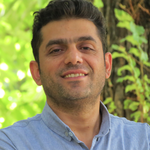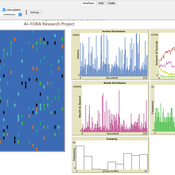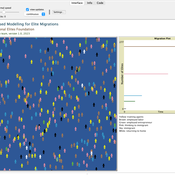
Hassan Bashiri
AffiliationsHamedan University of Technology
Personal homepagehttp://profs.hut.ac.ir/~bashiri
Professional homepage ORCID more infohttps://orcid.org/0000-0001-5429-5375
GitHub more info
I am an assistant professor in the Department of Computer Science at the Hamedan University of Technology, Hamedan, IRAN. I have completed my Ph.D. in Futures Studies (foresight) as an interdisciplinary field, an intersection of social sciences and engineering. My
background comes from computer science. For my Ph.D., I decided to pursue my education in Futures Studies; the field I thought I could apply engineering principles such as requirements engineering, analytical skills, design, modeling, planning, and, test engineering to shape the
desired futures. In PhD, I started the complex systems research field and agent-based modeling with NetLogo. In addition to several publications of papers, I published a book on complex systems titled “Futures Studies in Complex Systems” which was awarded as the book of the year by the Iranian Foresight Association.
Since May 2021, I started a research collaboration with TISSS Lab at the Johannes Gutenberg University Mainz as a project coordinator, the German Research Centre for AI, Human-Centered Multimedia, and the Centre for Research in Social Simulation. The project title is “AI for Assessment” and its objective is to understand the status quo and the future options of AI-based social assessment in public service provisions to help in the creation of improved AI technology for social welfare systems.
On the executive side, I have also various experiences, including head of the department, deputy of the Technology Incubator Center, director of university’s research affairs, and head of the International Scientific Cooperation Office.
Research Interests
Complex Systems, Social Modeling and Simulation
Engineering the Futures
The Targeted Subsidies Plan Model
Hassan Bashiri | Published Thursday, September 21, 2023The targeted subsidies plan model is based on the economic concept of targeted subsidies.
The targeted subsidies plan model simulates the distribution of subsidies among households in a community over several years. The model assumes that the government allocates a fixed amount of money each year for the purpose of distributing cash subsidies to eligible households. The eligible households are identified by dividing families into 10 groups based on their income, property, and wealth. The subsidy is distributed to the first four groups, with the first group receiving the highest subsidy amount. The model simulates the impact of the subsidy distribution process on the income and property of households in the community over time.
The model simulates a community of 230 households, each with a household income and wealth that follows a power-law distribution. The number of household members is modeled by a normal distribution. The model allocates a fixed amount of money each year for the purpose of distributing cash subsidies among eligible households. The eligible households are identified by dividing families into 10 groups based on their income, property, and wealth. The subsidy is distributed to the first four groups, with the first group receiving the highest subsidy amount.
The model runs for a period of 10 years, with the subsidy distribution process occurring every month. The subsidy received by each household is assumed to be spent, and a small portion may be saved and added to the household’s property. At the end of each year, the grouping of households based on income and assets is redone, and a number of families may be moved from one group to another based on changes in their income and property.
…
An Agent-Based Model for Skilled Workers Migration
Hassan Bashiri | Published Thursday, September 21, 2023This documentation provides an overview and explanation of the NetLogo simulation code for modeling skilled workers’ migration in Iran. The simulation aims to explore the dynamics of skilled workers’ migration and their transition through various states, including training, employment, and immigration.
The flow of elite and talent migration, or “brain drain,” is a complex issue with far-reaching implications for developing countries. The decision to migrate is made due to various factors including economic opportunities, political stability, social factors and personal circumstances.
Measuring individual interests in the field of immigration is a complex task that requires careful consideration of various factors. The agent-based model is a useful tool for understanding the complex factors that are involved in talent migration. By considering the various social, economic, and personal factors that influence migration decisions, policymakers can provide more effective strategies to retain skilled and talented labor and promote sustainable growth in developing countries. One of the main challenges in studying the flow of elite migration is the complexity of the decision-making process and a set of factors that lead to migration decisions. Agent-based modeling is a useful tool for understanding how individual decisions can lead to large-scale migration patterns.
Under development.

